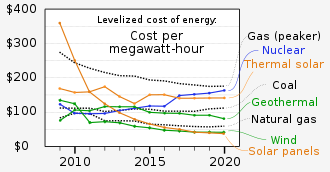Since antiquated times, when mankind tracked down fire to warm up and sear food, through the Middle Ages in which masses collected windmills to pulverize the wheat, until the high-level time frame wherein nations can get power separating the molecule. Man has searched on and on for energy sources. However, nuclear, geothermal and streaming, any leftover Express Energy sources are from current sun-controlled separation or from fossil excess pieces of plant and animal life that relied on the light. Finally, sun-situated energy itself is the result of the Sun’s nuclear blend. Geothermal power from hot, cemented rock over the magma of the Earth’s middle is the delayed consequence of the decay of radioactive materials present under the Earth’s outside, and nuclear parting relies upon the man-made splitting of significant radioactive parts in the Earth’s covering; in the two cases these parts were made in grandiose blast shoots before the advancement of the Solar System.
Industrial Revolution
Beginning from the very outset of the Industrial Revolution, the subject of addressing things to happen to energy supplies has been of interest. In 1865, William Stanley Jevons circulated The Coal Question in which he saw that the stores of coal were being depleted and that oil was a deficient replacement. In 1914, the U.S. Organization of Mines communicated that the full-scale creation was 5.7 billion barrels (910,000,000 m3). In 1956, Geophysicist M. Ruler Hubbert infers that U.S. oil creation would top someplace in the scope of 1965 and 1970 and that oil creation will top “inside 50 years” in light of 1956 data. In 1989, expected top by Colin Campbell In 2004, OPEC evaluated, with critical hypotheses, it would practically twofold oil yield by 2025
Reasonability
The normal improvement has underlined the practicality of energy use and headway. Harmless to the ecosystem power is efficient in its creation; the open reserve will not be decreased from now into the indefinite future – millions or billions of years. “Sensibility” also implies the limit of the environment to adjust to waste things, especially air pollution. Sources that have no quick side-effects (like breeze, daylight-based, and hydropower) are raised on this point. With overall interest in energy creation, the need to take on various energy sources is creating. Energy protection is one more choice or relating cycle to energy progression. It diminishes the interest in energy using it actually.
Flexibility
A couple of onlookers fight that idea of “energy opportunity” is a crazy and dim thought. The elective proposition of “energy flexibility” is a goal agreed with monetary, security, and energy genuine variables. The prospect of adaptability in energy was low down in the 1982 book Brittle Power: Energy Strategy for National Security. The makers battled that simply changing to local energy wouldn’t be secure naturally in light of the fact that the veritable deficiency is the habitually dependent and feeble energy structure of a country. Key points of view, for instance, gas lines and the electrical power network are regularly consolidated and really vulnerable to interference. They reason that a “flexible energy supply” is significant for both public security and the environment. They recommend an accentuation on energy adequacy and practical power that is decentralized.

In 2008,
- Past Intel Corporation Chairman and CEO Andrew Grove zeroed in on energy flexibility, battling that complete opportunity is unfeasible given the overall market for energy. He depicts energy strength as the ability to change as per breaks in the store of energy. Remembering that, he suggests the U.S. use power. Power can be made from different sources. An alternate energy supply will be less affected by the aggravation in the supply of any one source.
- He reasons that another part of zap is that power is “cheap” – meaning the power made in the U.S. is to stay there since it can’t be delivered abroad. According to Grove, a basic piece of moving zap and energy flexibility will change over the U.S. vehicle fleet from gas-filled to electric-controlled. This, consequently, will require the modernization and improvement of the electrical power organization.
- As relationship, for instance, The Reform Institute stand out to, types of progress related with the making splendid structure would work with the limit of the cross-section to hold vehicles at the same time communicating with it to charge their batteries.

